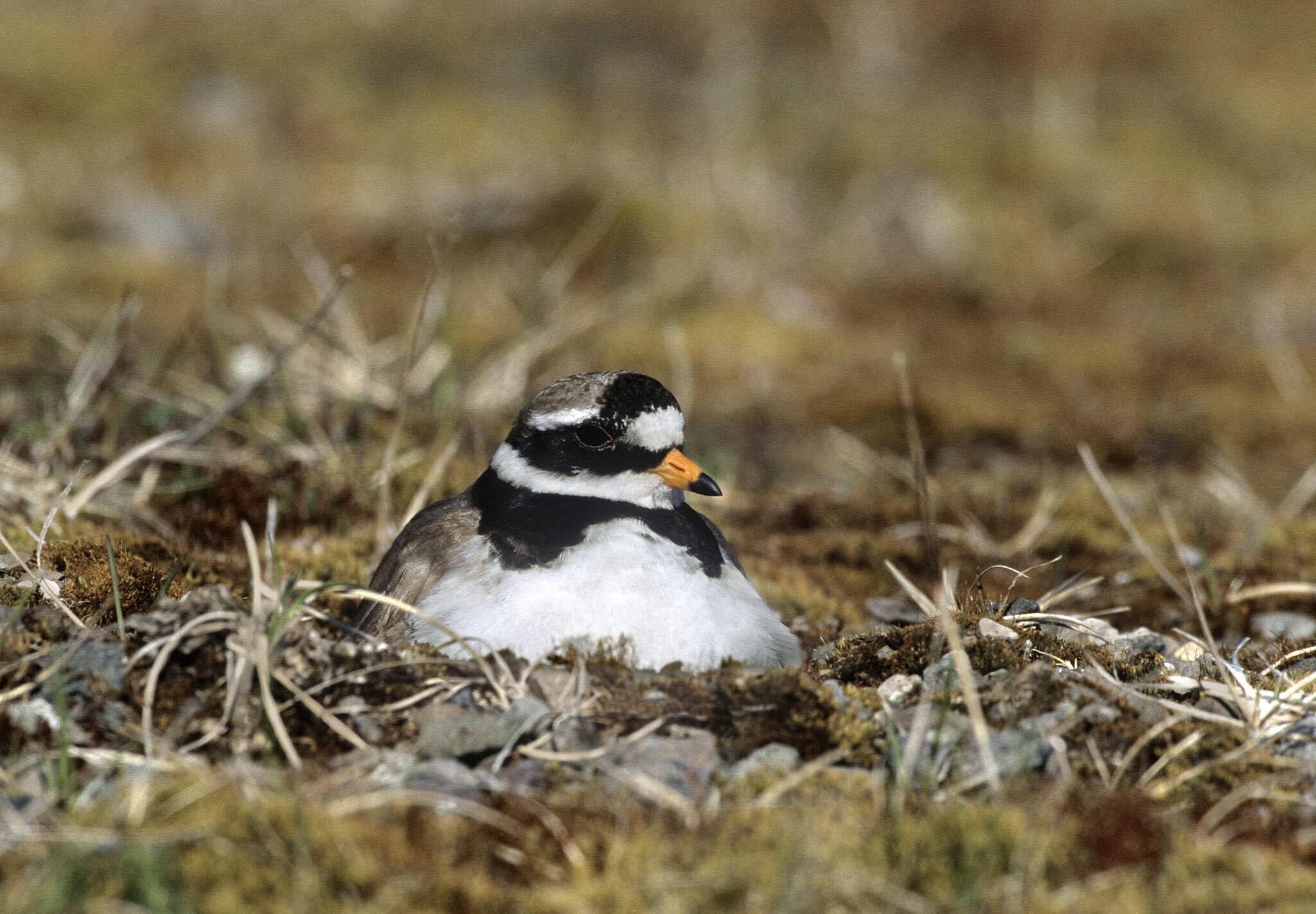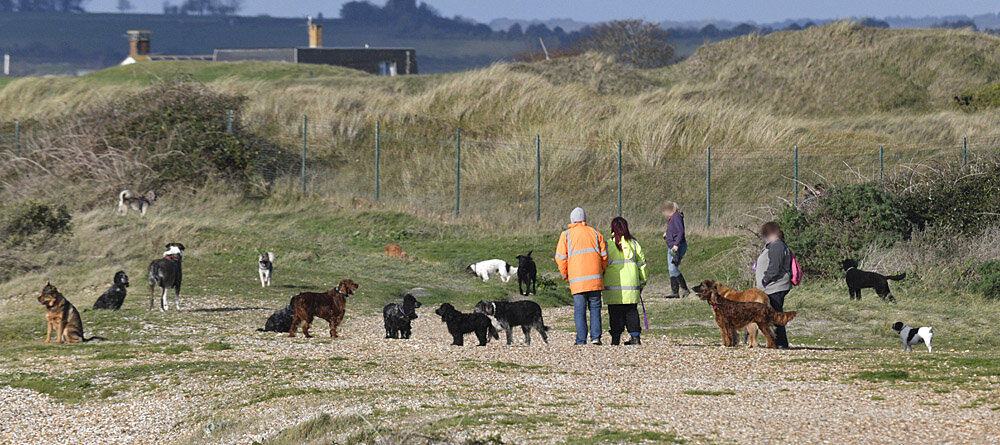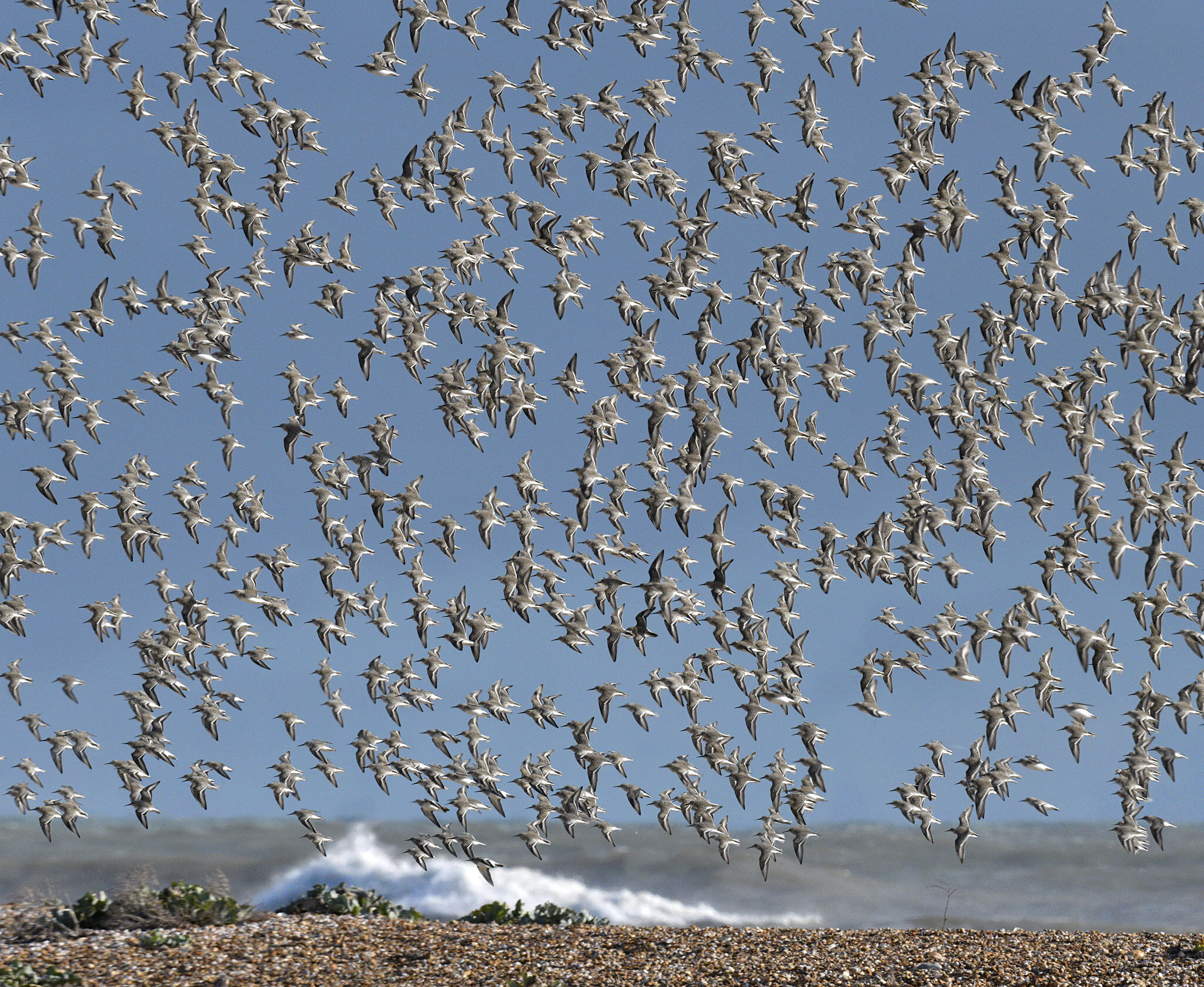Help for beleaguered nesting Ringed Plovers on the Hampshire coast.
Birds on the Brink is pleased to announce it has awarded a grant for a project aimed at reversing the declining fortunes of coastal-nesting Ringed Plovers.
Nesting Ringed Plovers cannot tolerate sustained and repeated disturbance at the nest and if this happens then sooner or later they will desert their eggs. Photograph ©Paul Sterry/Nature Photographers Ltd
The location for the Hayling Island Ringed Plover project is Gunner Point on the Hampshire coast. It aims to reduce (and ideally eliminate) the impacts of human recreation on ground nesting birds, specifically Ringed Plovers Charadrius hiaticula. The impacts on nesting birds come in two primary forms: trampling and disturbance by people (walkers and beach-goers) and disturbance and destruction by dogs.
Hayling Island lies within easy striking distance of several large conurbations making it a popular destination for walkers and dog-walkers. This image represents a snapshot of the average canine presence and on a typical day there are likely to be many dozens of dogs present at any given moment in the vicinity of where Ringed Plovers might choose to nest. Photograph ©Paul Sterry/Nature Photographers Ltd
The proposal is to erect a permanent ‘stock-mesh’ fence between the main area of public recreation and the primary zone that is used by nesting Ringed Plovers. Permanent signs will be erected to inform the public about the project and, in addition to the presence of a physical barrier, a volunteer team will be recruited to enlighten by word of mouth.
Ringed Plover eggs are superbly camouflaged when laid on shingle and gravel, making them really difficult to spot and vulnerable to unintended trampling. Photograph ©Paul Sterry/Nature Photographers Ltd
The Hayling Island Ringed Plover project is the brainchild of Trevor Codlin, a seasoned Hampshire birding stalwart and passionate conservationist. Given Trevor’s track record in the birding world, Birds on the Brink is confident the project is in good hands.
Ringed Plovers are unobtrusive birds and easily overlooked by visitors to the coast. Photograph ©Paul Sterry/Nature Photographers Ltd
In addition to protecting nesting birds, the fencing is likely to have other collateral conservation benefits. Gunner Point is a winter high-tide roost for waders, notably Dunlin Calidris alpina but also Ringed Plovers and other species; these are vulnerable to disturbance by people and their dogs at a time when they need to rest.
Dunlin in flight at Gunner Point, having been disturbed by dog-walkers. Photograph ©Paul Sterry/Nature Photographers Ltd
The area is also botanically rich and as consequence it is designated a Site of Special Scientific Interest. It is anticipated that reduced trampling will have a positive impact on the flora, with knock-on benefits for companion invertebrates.
Scarce plants that call Hayling Island‘s stabilised shingle and sand home include Shepherd’s Cress Teesdalia nudicaulis and it is hoped species such as this may benefit in time. Photograph ©Paul Sterry/Nature Photographers Ltd
Signage about the importance of Hayling Island as a winter roost for waders already exists but unfortunately goes largely unnoticed by visitors. Photograph ©Andrew Cleave/Nature Photographers Ltd







